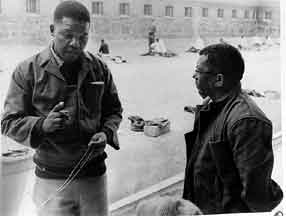1990 Nelson Mandela Freed

Nelson Mandela, leader of the African National Congress, was released after spending 27 years behind prison walls. Mandela was released by President F.W. DeKlerk as the first step in the creation of a multi-racial democracy.
Nelson Mandela, one of the most iconic figures in the struggle against apartheid in South Africa, spent 27 years in prison due to his unwavering commitment to the fight for equality and justice. As the leader of the African National Congress (ANC), Mandela became a symbol of resistance against the oppressive apartheid regime. His imprisonment drew international attention and garnered widespread condemnation of the South African government.
The apartheid system, introduced in 1948, was a policy of institutionalized racial segregation and discrimination enforced by the National Party government of South Africa. Under this system, the rights of the majority black inhabitants were curtailed, and white supremacy was maintained. Resistance to apartheid was met with severe brutality, leading to further divisions and unrest within the nation.
In the late 1980s, it became increasingly evident to South Africa's leadership that the apartheid system was unsustainable. The country was facing international sanctions, internal unrest, and growing resistance. It was in this context that F.W. De Klerk, who became president in 1989, recognized the need for significant reforms.
In a landmark move on February 11, 1990, President F.W. De Klerk ordered the release of Nelson Mandela. This decision was not merely an act of clemency but was symbolic of the shifting political landscape in South Africa. De Klerk's decision was influenced by both international and domestic pressures, as well as a pragmatic understanding that negotiation was the only viable path forward.
Mandela's release was the beginning of a series of negotiations between the ANC and the government. These talks aimed to dismantle the apartheid system and lay the foundation for a democratic and multi-racial South Africa. Mandela, with his immense moral authority, played a pivotal role in these discussions, advocating for reconciliation and unity.
The years that followed witnessed the abolition of apartheid laws, the lifting of the ban on the ANC, and the establishment of a transitional government. The culmination of these efforts was the first multi-racial elections in 1994, leading to Mandela's election as the first black president of South Africa.
In conclusion, Nelson Mandela's release from prison was a turning point in South African history. It marked the beginning of the end of apartheid and the start of a journey towards a more inclusive and democratic nation. President F.W. De Klerk's decision to release Mandela was instrumental in this transformation, signaling a commitment to change and a recognition of the need for a united South Africa.
 >
>